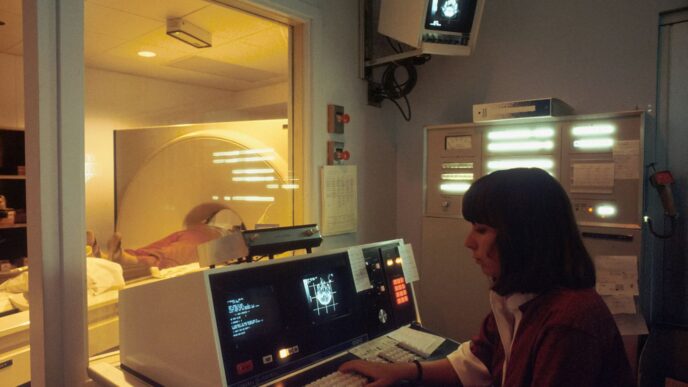Alright, let’s talk about what’s happening with medtech deals in 2025. It feels like things are really picking up, with companies looking to buy and sell to stay competitive. A lot of this has to do with new tech, like AI, and also just the way healthcare is changing, with more people needing care for long-term issues and a move towards looking after ourselves outside of the doctor’s office. Plus, everyone’s still thinking about how to keep their supply chains running smoothly. So, yeah, medtech m&a is definitely a big topic right now.
Key Takeaways
- Companies are buying and selling parts of their business to deal with money pressures and focus on areas that are growing fast.
- New tech, especially AI and connected devices, is a big reason why companies are making deals to get these innovations.
- The medical device market is still a bit all over the place, so expect more deals as companies try to grab more market share or expand into new countries.
- Big companies have a lot of cash saved up, and investors are looking to put money into medtech, meaning more deals are likely to happen.
- With more older people and a focus on managing long-term health issues, medtech companies are acquiring tools and tech to help with these growing needs.
Strategic Imperatives Driving Medtech M&A
Portfolio Balancing Amidst Margin Pressures
Big medtech companies are feeling the squeeze. Higher costs for everything from materials to regulatory compliance, plus more competition, mean their profit margins aren’t what they used to be. To keep shareholders happy and stay competitive, many are looking to trim down. This means selling off parts of their business that aren’t performing well or don’t fit their long-term goals. Think of it like cleaning out a closet – getting rid of the stuff you don’t need to make room for what’s important. Stryker, for example, recently sold off a part of its spinal implants business while simultaneously buying a fast-growing company in a different area. It’s all about making the company leaner and more focused on areas with better growth potential.
Acquiring Innovation in High-Growth Therapeutic Areas
While some companies are selling off older parts, others are actively buying. The focus is heavily on areas that are booming. We’re talking about things like heart devices, orthopedic implants, and diagnostics that use advanced tech. Companies with a lot of cash saved up from recent years are looking to snap up smaller, innovative firms or even companies that are still developing their first products but show a lot of promise. It’s a way to quickly get new, cutting-edge products into their lineup without having to build them from scratch. This strategy is especially popular in fields like interventional cardiology and neuro-modulation, where new treatments are constantly emerging.
Addressing the Impact of GLP-1 Drug Adoption
The rise of GLP-1 drugs, initially for diabetes and now widely used for weight loss, is creating ripples across the healthcare industry. While these drugs are improving patient health in some ways, they’re also changing the market for other medical devices. For instance, devices related to bariatric surgery or managing conditions that might be alleviated by weight loss could see shifts in demand. Companies are watching this closely, considering how these drug trends might affect their existing product lines and looking for opportunities to acquire or develop technologies that complement or adapt to this new treatment landscape. It’s a complex situation, and M&A activity will likely reflect a cautious approach as the full impact of these drugs becomes clearer.
Technological Advancements Fueling Dealmaking
It’s pretty clear that new tech is shaking things up in the medtech world, and companies are definitely paying attention. We’re seeing a lot of deal-making happening because of this. Think about it – if you’re a big company, you want to stay ahead of the curve, right? Buying up smaller outfits with cool new gadgets or software is often the fastest way to do that.
AI and Machine Learning Integration
Artificial intelligence and machine learning are no longer just buzzwords; they’re becoming standard tools in medtech. Companies are snapping up businesses that have developed AI-powered diagnostic tools or platforms that can analyze patient data in new ways. It’s all about making healthcare smarter and more efficient. For example, AI can help spot diseases earlier or personalize treatments, which is a huge win for patients and providers alike. We’re seeing acquisitions focused on AI for everything from image analysis in radiology to predicting patient outcomes.
Focus on Wearables and Connected Care
Remember when smartwatches were just for telling time and counting steps? Now, they’re becoming serious health monitors. The market for wearables and connected devices that track vital signs, manage chronic conditions, or even monitor post-operative recovery is booming. Companies are acquiring firms that are leaders in this space to build out their own connected health ecosystems. This trend is all about keeping patients engaged with their health outside of the doctor’s office and providing continuous data streams that can improve care.
Acquisition of Specialized and Proprietary Technologies
Beyond the big trends like AI and wearables, there’s a lot of interest in highly specialized technologies. This could be anything from a unique material used in implants to a novel robotic surgical system. Companies are looking to acquire these proprietary technologies to fill specific gaps in their product lines or to gain a competitive edge in niche markets. It’s not always about the flashiest tech; sometimes, it’s about acquiring a piece of intellectual property that solves a very specific problem really well. These kinds of deals can be smaller, but they can have a big impact on a company’s overall strategy and market position.
Market Dynamics and Consolidation Trends
The medtech landscape in 2025 is really shaping up to be a busy one, with companies looking to get bigger and smarter through acquisitions. It feels like everyone’s trying to either grab a bigger piece of the pie or find a niche they can really own. We’re seeing a lot of this happen as companies try to make their operations smoother and more cost-effective.
Consolidating Fragmented Market Segments
Some parts of the medtech market are still pretty spread out, with lots of smaller players. Big companies are stepping in to buy up these smaller, specialized firms. It’s a way to quickly broaden their product lines and become more competitive. Think of it like collecting rare items to complete a set – they’re filling out their portfolios. This strategy helps them achieve better economies of scale, meaning they can produce things more cheaply because they’re making more of them.
Geographic Expansion Through Acquisitions
It’s not just about products; it’s also about where you sell them. Companies are actively acquiring businesses that have a strong presence in new regions or countries. This is a much faster way to get into a new market than building everything from scratch. It’s about planting flags in new territories and tapping into customer bases they couldn’t easily reach before.
Strategic Tuck-In Acquisitions for Portfolio Gaps
Even the biggest companies are looking for smaller, targeted acquisitions. These aren’t usually headline-grabbing mega-deals. Instead, they’re about filling specific holes in their product offerings. If a company is strong in one area but weak in another, they might buy a smaller firm that excels in that missing piece. This allows them to round out their portfolio without the massive cost and complexity of developing something new internally or buying a much larger, unrelated business. It’s a smart way to stay relevant and meet a wider range of patient needs.
Financial Landscape and Investment Activity

Increased Cash Reserves and Acquisition Readiness
Companies in the medtech space are sitting on a good amount of cash right now. It feels like a lot of them have been saving up, maybe because things were a bit uncertain for a while. Now, with that money in the bank, they’re in a much better position to go out and buy other companies. It’s not just about having the cash, though; it’s about being ready to act fast when the right opportunity pops up. This means they’ve probably done some homework on potential targets and have their ducks in a row for making deals happen. This readiness is a big signal that M&A activity is likely to pick up steam.
Resurgence of IPOs and Venture Funding
We’re seeing more medtech startups heading to the public markets through Initial Public Offerings (IPOs). This is a good sign for the industry because it shows investors are confident in the sector’s future. It also means that companies that have been around for a bit, but maybe weren’t ready for a full acquisition, now have another path to raise significant capital. Alongside this, venture capital firms are also opening their wallets again, especially for innovative early-stage medtech companies. This dual approach – IPOs and VC funding – creates a healthier ecosystem for both new ideas and established players looking to grow.
Private Equity’s Renewed Interest in Medtech
Private equity firms are definitely looking at medtech again, and they’re coming back with more money to spend. They see the long-term potential in this industry, especially with an aging population and the constant need for new medical solutions. These firms often bring not just capital but also operational know-how, which can help medtech companies they invest in become more efficient and profitable. They’re not just buying companies; they’re often looking to build them up and then sell them later for a profit, or even take them public themselves. It’s a dynamic that adds another layer of complexity and opportunity to the M&A scene.
The financial markets are showing a clear shift, with companies and investors alike feeling more optimistic about the medtech sector. This renewed confidence is translating into more available capital for acquisitions, both from corporate balance sheets and from external investment sources like private equity and venture capital. It’s creating a fertile ground for deal-making in the coming year.
Here’s a quick look at how different funding sources are shaping up:
- Corporate Cash Reserves: Many established medtech companies have built up significant cash piles, positioning them as active buyers.
- Venture Capital: Early-stage and growth-stage medtech startups are attracting renewed VC interest, fueling innovation.
- Private Equity: PE firms are actively seeking acquisition targets, often looking for companies with strong market positions or disruptive technologies.
- Public Markets (IPOs): A more favorable IPO window allows companies to raise substantial funds and provides an exit route for some investors.
Evolving Healthcare Needs and Demographic Shifts
The way people get healthcare is changing, and it’s not just about new gadgets. Big shifts in who we are as a population and what people expect from their health services are really shaking things up. Companies that make medical stuff need to pay attention to this, or they might get left behind.
Addressing the Aging Population and Chronic Diseases
Let’s face it, more people are living longer. That’s great, but it also means more folks are dealing with long-term health issues like heart problems, diabetes, or joint pain. This isn’t a small thing; it’s a massive driver for the medtech market. Think about devices that help manage chronic pain, monitor conditions at home, or make life easier for older adults. Companies are buying up others that have these kinds of solutions. It’s about keeping people healthier and more independent for longer.
Supporting Outpatient and Non-Traditional Care Settings
People don’t always want to go to a big hospital anymore. Surgery centers and clinics outside of traditional hospitals are becoming super popular. This means medtech companies need to offer devices and tools that work well in these settings. We’re talking about things that are easy to use, maybe less invasive, and can be used in places that aren’t hospitals. Acquisitions in this space are about making sure medtech is ready for where care is actually happening now.
Consumer-Driven Healthcare Opportunities
Nowadays, people are more involved in their own health decisions. They want information, they want convenience, and they want to manage things themselves when possible. This is opening up new markets for medtech. Think about wearables that track fitness and health, apps that connect to medical devices, or even tools that let people do certain tests at home. Companies are looking to buy into these direct-to-consumer areas because people are actively seeking out ways to take more control of their well-being.
The healthcare landscape is being reshaped by global trends and changing demographics. For medtech companies, this means adapting their strategies to meet new demands, focusing on solutions that support longer lifespans, chronic disease management, and patient convenience outside traditional settings. The future of medtech M&A will likely involve acquiring capabilities that align with these evolving consumer and societal needs.
Supply Chain Resilience and Manufacturing Capabilities
Supply chains in medtech are getting more attention after a few disruptive years. Companies are no longer just making contingency plans—they’re turning to mergers and acquisitions to actually fix weak spots. Buying firms with strong logistics or advanced manufacturing know-how is becoming standard, not optional. Let’s break down how dealmaking is reshaping how companies source, assemble, and distribute medical tech.
Mitigating Supply Chain Risks Through M&A
Many medtech companies are looking to plug gaps by snapping up suppliers or regional manufacturing partners. These are some common moves:
- Buying key component manufacturers to reduce reliance on third-party suppliers.
- Acquiring packaging or sterilization specialists for more control over product delivery.
- Choosing regional partners to sidestep global shipping delays and tariffs.
Right now, everyone seems to be rethinking their supply chain exposure. With tariffs, stricter FDA timelines, and unpredictable disruptions, direct ownership is often viewed as the safer bet.
Changes in global trade and regulation have forced medtech companies to get hands-on with where and how their products are made, since old ways of sourcing just don’t cut it anymore.
Acquiring Advanced Manufacturing Expertise
It’s not just where things are made; it’s how they’re made. Companies are using M&A to bring flagship manufacturing processes under one roof. A few trends popping up lately:
- Deals for businesses with specialty plastics or catheter extrusion processes.
- Acquisitions of robotics and automation shops to speed up assembly and reduce errors.
- Buying facilities with built-in compliance for demanding markets like the EU or Japan.
Here’s a quick look at some recent deal activity:
| Year | Type of Acquisition | Primary Goal |
|---|---|---|
| 2024 | Specialty facility (NC, US) | Nearshoring, faster lead |
| 2025 | Supplier with AI manuf. tools | Speed, cost reduction |
| 2025 | Advanced sterilization firm | Regulatory compliance |
Nearshoring and Enhancing Production Stability
Nearshoring means moving production closer to where products are actually used. This is gaining steam for medtech, and not just for shipping reasons:
- More control over inventory and timelines.
- Less risk from political or trade disputes overseas.
- Easier to comply with local regulations and quality checks.
In 2025, we’re likely to see even more deals focused on building up manufacturing footprints in North America, Europe, and select Asian markets—while dialing back exposure in countries facing more regulatory or economic volatility.
If the past few years taught the industry anything, it’s that stability beats low costs when lives are on the line.
Regulatory Environment and Compliance Focus
Navigating Evolving Regulatory Standards
The regulatory landscape for medical devices is always shifting, and 2025 is no different. Companies looking to grow through mergers and acquisitions need to pay close attention to these changes. It’s not just about the big picture; the specifics matter a lot. For instance, the FDA’s internal restructuring has led to some delays and less predictable timelines for approvals. This means that when you’re looking at a potential deal, you have to factor in how long it might take to get new products or merged entities through the regulatory process. It’s like trying to plan a road trip when you know there might be unexpected construction delays – you need to build in extra time and have a backup plan.
Acquiring Firms with Robust Compliance Frameworks
Because of these regulatory shifts, buying companies that already have strong compliance systems in place is becoming a smart move. Think about it: if you acquire a company that’s already good at following all the rules, you’re saving yourself a lot of headaches and potential future problems. It’s much easier to integrate a well-oiled machine than to try and fix one that’s sputtering. We’re seeing deals where the buyer specifically wants the target company’s established quality management systems and regulatory track record. It’s a way to de-risk the acquisition and get a head start on market entry.
Anticipated Shifts in Regulatory Scrutiny
Looking ahead, there’s a lot of talk about potential changes in how strictly regulators will oversee the industry. Some predict a potentially lighter touch, which could speed up M&A activity. However, this isn’t a guarantee, and companies need to be prepared for anything. It’s a bit like the weather – you can check the forecast, but you still need to pack for both sun and rain. The key is to build flexibility into your M&A strategy so you can adapt whether the regulatory climate becomes more or less stringent. This means keeping a close eye on policy discussions and being ready to adjust your plans accordingly.
The interplay between regulatory bodies and medtech innovation is a constant dance. Companies that proactively build strong compliance into their core operations and M&A targets are better positioned to adapt to evolving requirements and maintain market access.
Looking Ahead: The Evolving Medtech Landscape
So, what does all this mean for the medtech world in 2025? It’s clear that things aren’t slowing down. We’re seeing big companies snapping up innovative smaller ones, especially those using AI and digital tools. Plus, with a more stable economy and maybe even some regulatory breathing room, expect more deals to happen. Companies are also thinking about how to stay strong, whether that’s by making their supply chains tougher or by focusing on areas that are really growing. It’s a dynamic time, and staying sharp and ready to adapt will be key for success in the medtech space.














